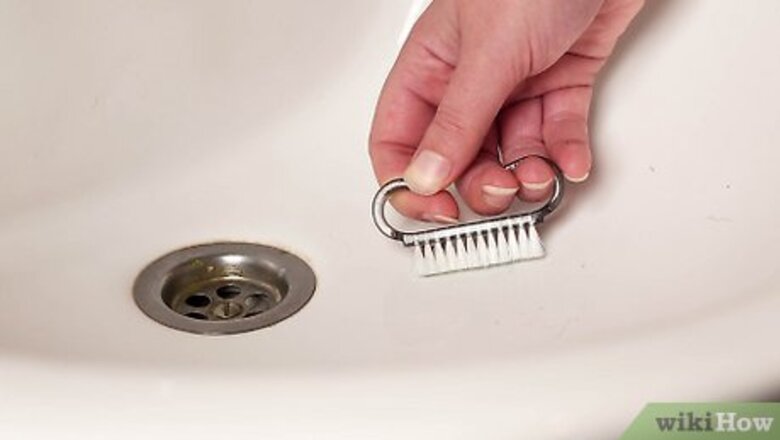
views
Brightening Your Sink
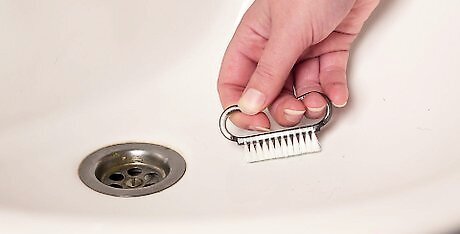
Use white vinegar to remove limescale. Get rid of dull-looking, dingy limescale buildup with white vinegar. Fill an empty spray bottle with pure, white vinegar and spray it on your white sink. Immediately scrub the surface with a non scratch scrub brush or sponge until the buildup is gone. Rinse all the vinegar off with water. Vinegar also works as a disinfectant.
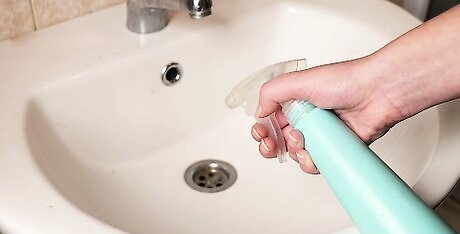
Spray your sink with hydrogen peroxide. Hydrogen peroxide will gently brighten up a white sink. Fill a spray bottle with hydrogen peroxide, spray your sink all over and leave it overnight. The hydrogen peroxide will whiten and brighten your sink. Simply rinse and wipe the sink dry the next morning.
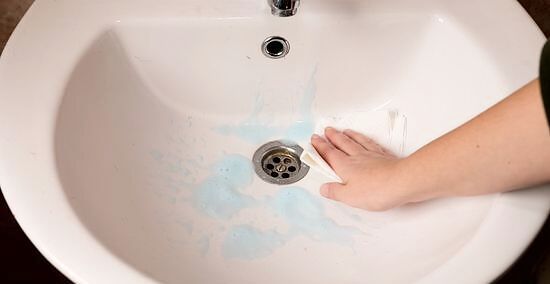
Wipe your sink down with glass cleaner. Glass cleaner contains ammonia, which will remove dirt and shine a white sink. Spray the surface of your sink with glass cleaner, let it sit for 30 seconds and wipe it dry with a paper towel.
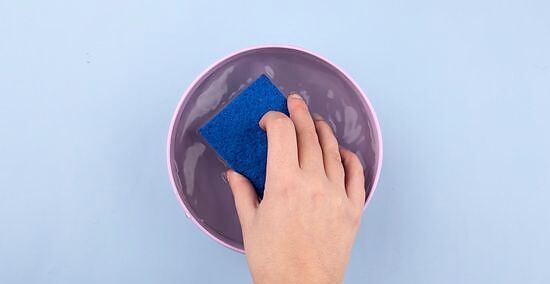
Scrub your sink with baking soda and ammonia. For a monthly deep cleaning of your white sink, mix together a gallon of warm water, a ⁄4 cup (59 mL) of baking soda and a ⁄4 cup (59 mL) of ammonia. Soak a non scratch sponge in the mixture and completely scrub your sink’s surface down. Rinse well afterwards, so you’re not left with a film from the cleaner.

Spray your sink down with chlorine bleach. Chlorine bleach can eat away at metal drains and faucets, so make sure you avoid these areas when using it to brighten a white sink. Dilute chlorine bleach by adding 1 teaspoon (4.9 mL) to a water filled spray bottle. Spray the surface of your sink, let the mixture sit for a few minutes and scrub with a non scratch sponge. Rinse well with water. Never mix chlorine bleach with ammonia, because it forms a noxious gas.
Removing Stubborn Stains

Soak stains with oxygen bleach. Find an oxygenated bleach in powder form and mix it with water according to the manufacturer’s instructions. Dip 2 to 3 rags in the mixture, depending on how large the sink is, and lay the saturated rags along the bottom of the sink. Leave the rags alone for 15 minutes, take them off and scrub any remaining stains with a non abrasive brush. Hang saturated rags over the edge of your sink to remove any stains along the sides.
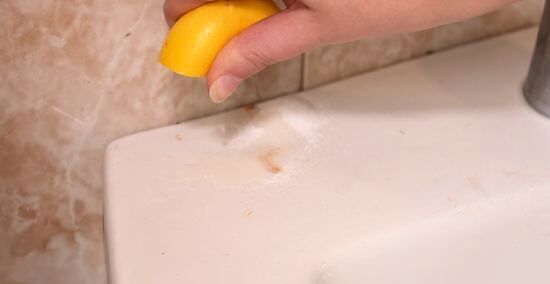
Clean up rust stains with salt and lemon juice. Rust or any other stubborn stains don’t stand a chance to a DIY cleaner made from salt and lemon juice. Sprinkle table salt on any stains, cut a lemon in half to squeeze its juice directly over the salt, and scrub with a clean dish rag. Rinse the area with water and repeat if necessary.
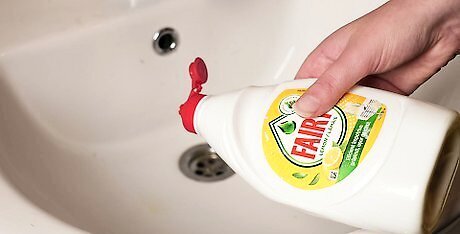
Use liquid dishwasher soap. Liquid dishwasher soap is strong stuff and you only need to leave it on your white sink for a short time to cut through grease, grime and stains. Squirt a small amount onto a soft rag or sponge and wipe your sink down all over with it. Don’t walk away, and rinse your sink with water after one minute.
Preventing a Dirty Sink
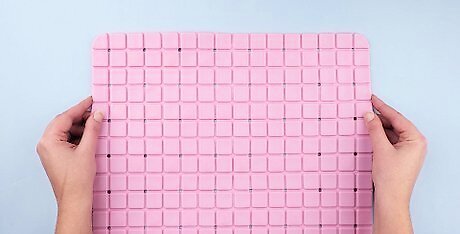
Protect the bottom of a kitchen sink with a rubber mat. A rubber mat attached to the bottom with suction cups will protect your sink from dirty dishes and scuffs made by pots and pans. Find an inexpensive mat at your local home store and use it every time you do dishes. Prevent any additional stains and watermarks by removing the mat when it’s not in use.
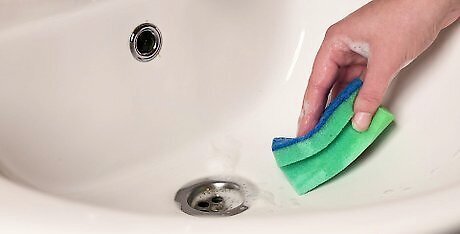
Wipe and dry your sink out after each use. Get into the habit of wiping your sink after each use to prevent yellowing or staining in the first place. Use a small amount of dish soap on a wet, soft rag or sponge and thoroughly wipe your white sink down. Rinse the soap with water and completely dry the sink with a paper towel or other dry cloth.

Avoid leaving dishes in your sink overnight. Things like coffee, tea or grease can stain white porcelain or fire clay. Make sure you don’t leave half-filled, dripping coffee cups or dirty frying pans in your sink overnight. The longer dirty plates stay in your sink, the longer stains have to set in.

Protect your sink with lemon oil. Polish and give your sink a protective coating with lemon oil. Add several drops of lemon essential oil to a soft, dry cloth to coat your white sink with. Remember to dry your sink out first before adding shine and repelling residue with lemon oil.




















Comments
0 comment